As the skies clear after a refreshing rain shower, pool owners are faced with an important question: Should you shock your pool after it rains?
Swimming pool maintenance involves a delicate balance of chemicals and treatments to ensure the water remains safe, clean, and inviting. Rainfall introduces a range of contaminants and imbalances that can affect your pool’s water quality.
In this article, we will explore the reasons behind considering a pool shock after rain, the potential benefits, and the factors to weigh before making this decision.
It would be best if you shocked your pool after hard rains or stormy weather with a chlorinated shock. After a storm, shock helps to oxidize organic contaminants or materials present in the water.
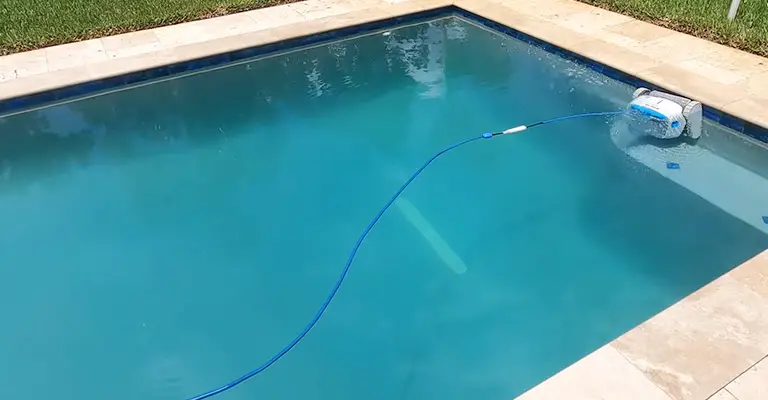
Shock and filter the water After the Rain
Adding new water to your pool can drastically alter the chemical balance during heavy rains.
Besides storms and flooding, many other things can enter your pool during a storm. Water chemistry can be affected by dirt and debris, rainwater, and even lightning, all of which can strain equipment.
It is essential to clean the filter effectively to avoid issues like algae, cloudy water, stains, and excessive filter pressure. During the evening, shocks work best since chlorine doesn’t dissipate as quickly as during the day.
It also works best when the pH levels in the water are between 7.4 and 7.6 for optimal chlorine effectiveness.
Add enough shock to increase FAC levels to 10.0 ppm to oxidize organic contaminants. It will take time for the shock to work and chlorine levels to drop back down to 2.0–4.0 ppm before swimming again.
If you want to ensure proper filtration and circulation, run the system for at least 12–24 hours. By doing so, you will remove dirt and debris from your pool, as well as circulate the chlorine more thoroughly.
If your pool was shocked with a shock treatment the day after, you should check your filter pressure gauge the next day. Cleaning the filter is necessary when the pressure exceeds 8-10 PSI over clean or starting pressure.
After balancing your pool, shocking your water, and running your filter, if your pool water still looks cloudy, using a water clarifier can help.
Things To Do To Your Pool After It Rains
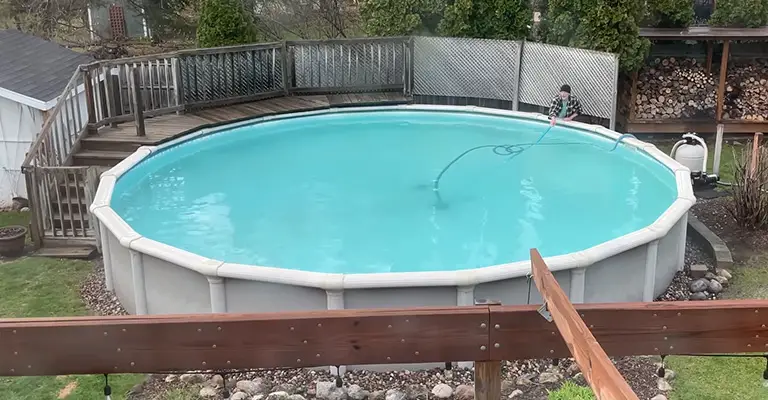
The pH and alkalinity levels of your pool are affected by rainfall, whereas excess rainfall adds unwanted water.
It is also important to note that rainstorms sweep into your water with many contaminants. As a result, it’s essential to keep a close eye on the amount of rain that gets into your pool.
A light rain or shower won’t have a significant impact on your water compared to a tropical storm lasting several hours. Nevertheless, there will be an impact on the chemistry of your pool from both of them.
Using the following tips can prevent a chemistry nightmare in the swimming pool. After a rainstorm, here are some things to do to keep your swimming pool’s water clear and ready to swim in.
1. Check Your Water Level
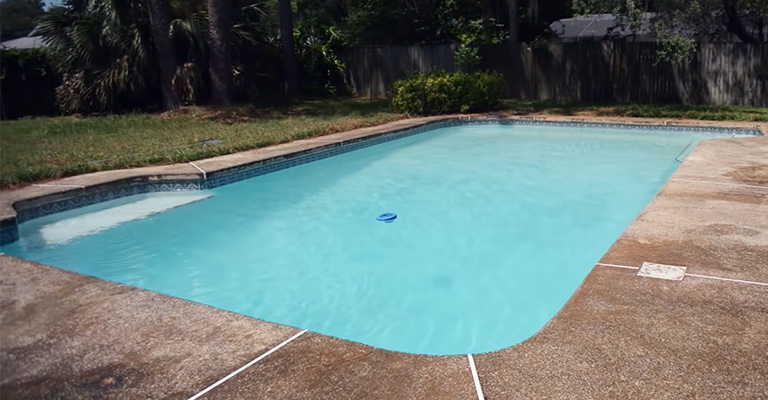
You should check your pool’s water level after it rains because that’s the first thing you should do, mainly if there is a severe storm or hurricane.
You’re probably having a problem with your water level being WAY higher than where it should be: at the middle of your skimmer hole. In such cases, everything from filtration to water chemistry is affected.
Fortunately, this problem is quite simple to fix:
The water level in your pool may have reached the mid-skimmer level, so drain your pool gradually to reduce it. This requires the use of a pool pump.
Following is how to drain water from a swimming pool after rain:
- Choose “Waste” or “Backwash” for your pump.
- Hook up the backwash hose
- You will need to turn on the pool pump
- When your pump empties the water, monitor the water level.
- After your water reaches a mid-skimmer level, shut off your pump.
Use your pool vacuum to vacuum your pool skimmer instead of running your pump to backwash. This will get you a head start on cleaning.
When you vacuum the pool floor and decrease the water level, you accomplish two things simultaneously.
2. Turn On The Filter System
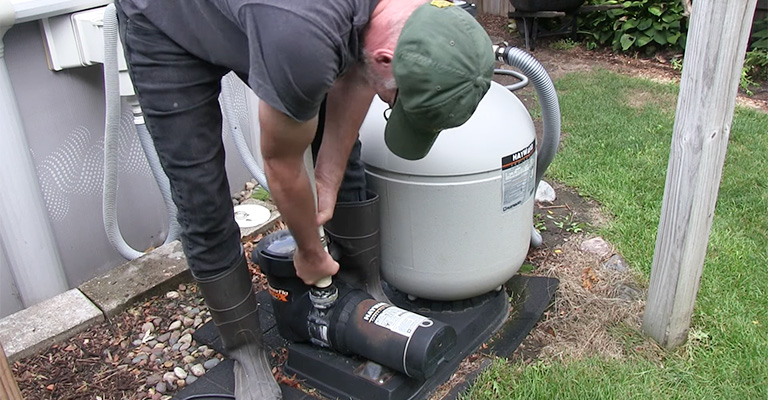
The next step is to get water circulating again once the water level has been restored.
IMPORTANT: Be sure to empty the pump basket and the pool skimmer baskets before turning on the pump again. Put the pump in the “FILTER” position.
Keep your pump running as you move on to the next step. In the meantime, you can keep busy while your main drain handles some of the cleaning.
Also, you might find it interesting to:
- Warm up the water in your pool with your pool heater
- Make sure your testing kit and chemicals are ready for pool water testing
3. Shock The Pool
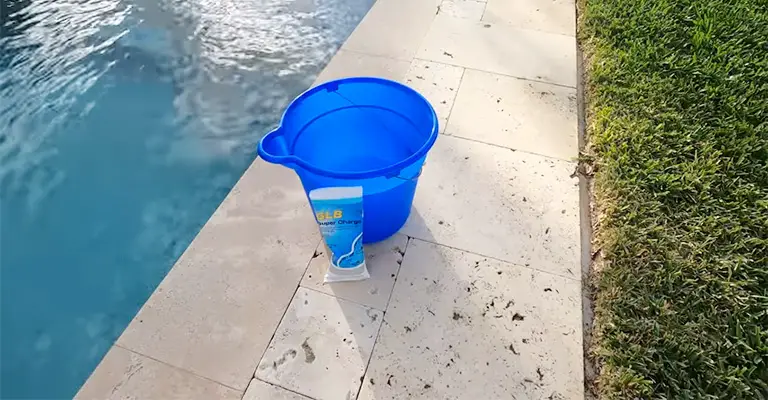
You should wait to fix your pool chemistry – but if you’d like to boost your water, that’s fine. Your pool’s chlorine levels will drop significantly after heavy rainfall because it has to deal with contaminants.
A shock treatment replaces chlorine that has been lost due to rain. You don’t need to do more than one shock treatment if you want to balance your water, but it will still have an impact as you clean your pool as well.
This way, your chlorine levels will be closer to normal by the time you start adjusting chemicals. Keep the pump running and shock the pool.
Unless you’re planning on shocking a pool in the rain, you can shock one in the rain. It’s important to remember that rainwater adds more contaminants, so shocking during dry weather will be less effective.
4. Skim Surface Debris
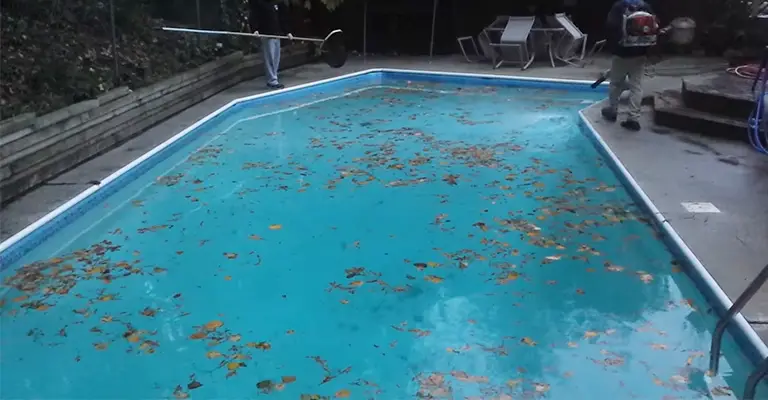
Immediately skim out ANY floating objects in your water. Later on, it will sink to the pool floor if you delay. If you’re not vacuuming, then it’ll stay there, sopping up the chlorine and ruining your crystal-clear water.
There is only a little debris on pool surfaces, such as leaves, twigs, and bugs. Nevertheless, the point is to clean everything off the surface. Make sure to fish out everything that can be reached with your skimmer.
If you install an automatic skimmer, your pool will require less skimming. These pool accessories clip onto your return jets and catch any surface debris that flashes around your pool.
5. Brush And Vacuum The Pool Floor
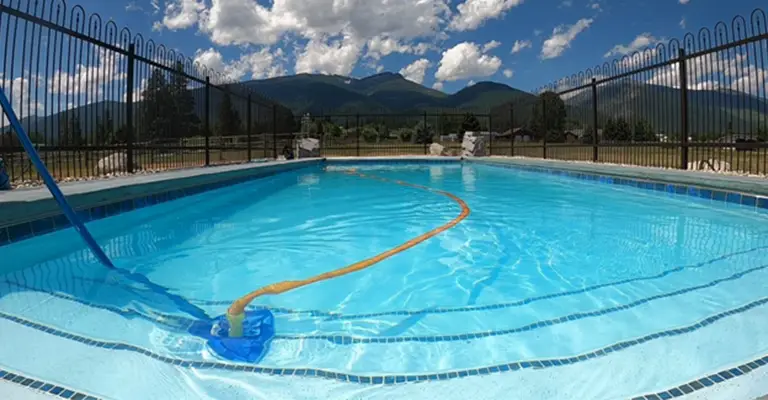
After your pool’s surface has reached a smooth finish, it’s time to dive into the pool. But before you begin, scrub the walls and stairs. There is a good chance that contaminants lurk in your pool, allowing them to grow and turn it green or cloudy.
As soon as you’re done scrubbing, attach your vacuum to the skimmer and clean the pool floor. The best way to make the pool clean is to vacuum it along the full length.
You can move on to step 2 if you have an automatic pool cleaner. Push floor debris towards your main drain with a brush when you don’t have a vacuum. You will suck it up in your main drain and direct it straight to your filter.
6. Test Your Water
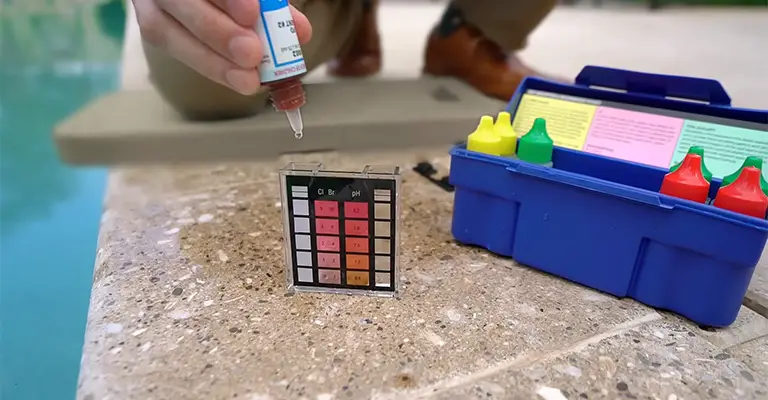
This could be the most important thing you do after raining on your pool. Exactly why? It’s the key to keeping your water clean on an ongoing basis. This is the only way to prevent your water from turning green or cloudy during rainy seasons.
7. Adjust Chemicals To Rebalance Your Water

Depending on your water test results, you should know which chemicals need the most adjustment. In most cases, it’s best to start with TA since it stabilizes your pH. Then pH, then CA, and finally, Sanitizer.
Is It Better To Shock A Pool Before Or After Rain?
It is wise to shock the pool during a major rainstorm since contaminants will be introduced. If you can’t, or the rain wasn’t predicted, it’s okay to shock the pool after it rains.
In addition to precautions against heavy rain, other measures should be taken. Ensure the pool is protected from wind blowing in outdoor furniture or anything else in the yard.
Accessories and tools for the pool can also be stored away. Turn off gas lines as well as pool equipment at the breaker before the storm hits for safety.
Final Words
More than just adding chemicals is needed to restore your pool’s balance. Before you retest the pool, you should drain it to its average level.
A perfect pH level and alkalinity will indicate when the pH needs to be adjusted.
It is a common practice for pool owners to shock their pools after a big storm, but this isn’t always necessary. Shocking the pool is only required in cases of abnormally high contaminants after a destructive storm.
Choosing to shock your pool will not cause any harm to it. It’s not the standard post-storm procedure, however. It’s never a bad idea to ask for help if you need help testing and adjusting pool levels.







